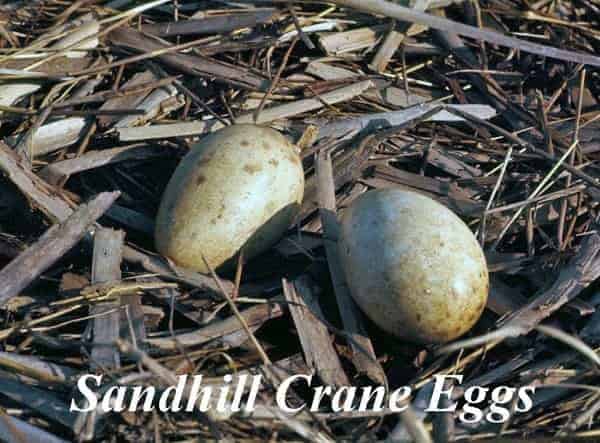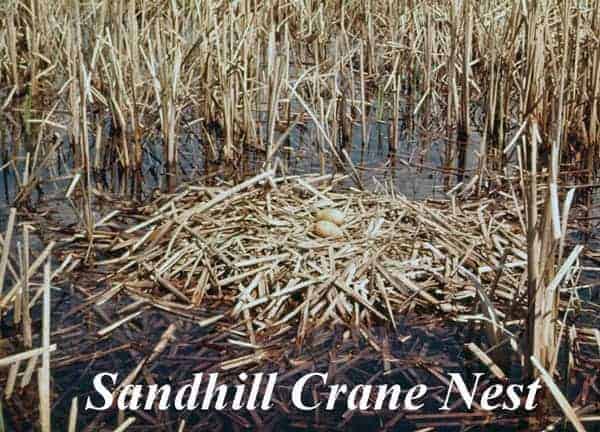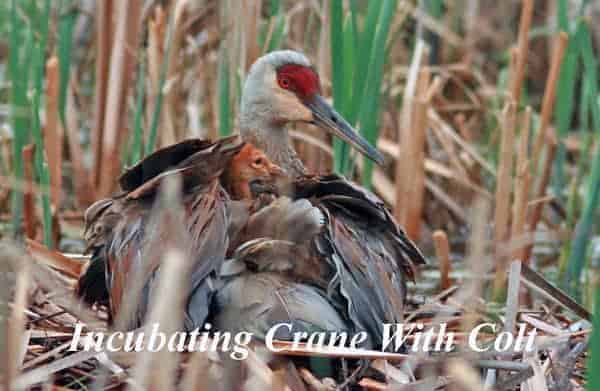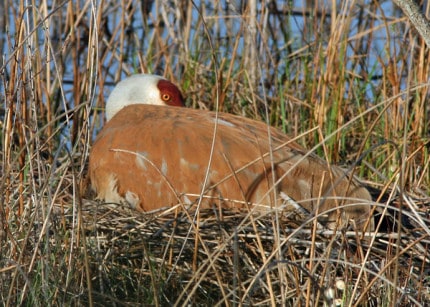
(Chelsea Update would like to thank Tom Hodgson and the Waterloo Natural History Association for the information and photos in this column.)
Thanks to our mild winter, many cranes never bothered to leave for the warm, sunny south. Because of this and the warming climate that has been occurring over the past several years, cranes are nesting about 10 days earlier than the historical average.
In the past, the average time for the first egg to be laid has been early to mid-April. Now the last week in March is more typical. As a result, the first hatchings are coming in late April instead of early May.
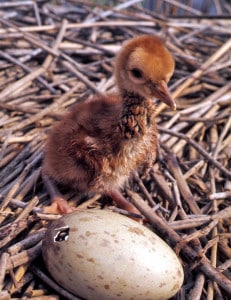
For the past several weeks, cranes have been exhibiting early breeding behavior. They are most often seen in area fields in groups of three or four. These are family groups represented by the mated pair and the one or two offspring from the previous season. As the adults become more serious about nesting they become less tolerant of their offspring and eventually drive them away. These young birds will not be old enough to breed for a couple of years and will spend their time feeding and loafing with other sub-adult individuals.
In the meantime, the adult pairs have stablished nesting territories in area marshlands that they advertise with their booming “unison calls.” Most pairs return to the same territories year after year. Their nests, built from marsh vegetation, resemble soggy hay stacks and are about three feet in diameter.
By now, they have completed nest building and have laid one egg, to be followed in a couple of days by a second. Both adults take turns incubation the eggs.
To protect the egg from the cold, they begin incubating it immediately, which means it will hatch a day or two before the second. Therefore the first colt (young cranes are called colts) will be larger and stronger than the second. In years when food is scarce, the second colt may perish. The majority of nesting pairs are successful in raising only one young each year.
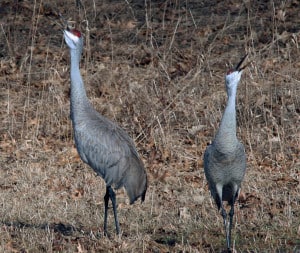
For the first few days of their lives, the colts are kept close to the nests in their marsh habitats. As they grow, their parents take them into nearby fields to feed. During this time they are vulnerable to predation, especially by coyotes. The colts grow rapidly, gaining an inch in height and increasing their body weight by ten percent each day.
At ten weeks they are as large as their parents and ready to fly.
If you live near a marshland, even a small one, and hear the sandhill crane’s booming calls every morning; you probably have crane neighbors. And for a while you will have no need for an alarm clock.




